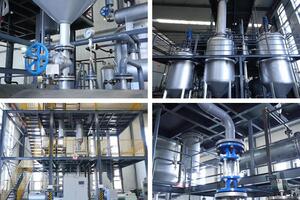The Rise of Bio-based Lubricants and its Impact on Waste Oil Recycling
الجسم
Traditional Lubricants and the Recycling Challenge
Conventional lubricants, predominantly made from petroleum, are crucial for industrial and automotive applications. However, their disposal presents a significant environmental challenge. When improperly disposed of, used oil can contaminate soil and water, posing threats to human health and ecosystems.
While recycling infrastructure exists to reprocess used oil into new lubricants or fuel, the process is not without limitations. Recycling can be costly, and not all used oil is suitable for reprocessing. Additionally, concerns remain about the presence of harmful additives in recycled lubricants.
Bio-lubricants: A Greener Alternative?
Bio-based lubricants offer a promising solution with several advantages:
Sustainability: Derived from renewable resources like vegetable oils or animal fats, they offer a more sustainable alternative to fossil fuels.
Biodegradability: Unlike their petroleum counterparts, bio-lubricants are readily broken down by microorganisms, minimizing environmental risks from spills or leaks.
Performance: Advancements in technology have yielded bio-lubricants with performance comparable to traditional lubricants in many applications.
The Impact on Waste Oil Recycling
The rise of bio-lubricants could impact waste oil recycling in several ways:
Potential Decrease in Waste Oil Volume:
Widespread adoption of bio-lubricants could lead to a decrease in the total volume of used oil generated, potentially reducing the demand for traditional recycling infrastructure.
Shifting Focus:
The focus of recycling efforts might shift towards collecting and processing used bio-lubricants, potentially requiring adjustments to existing facilities or the development of new bio-specific recycling technologies.
Opportunity for Collaboration
Collaboration between the bio-lubricant and waste oil recycling industries could pave the way for innovative solutions, such as developing efficient methods to co-process used bio-lubricants and traditional lubricants.
Uncertainties and Challenges
While promising, the rise of bio-lubricants also presents uncertainties and challenges:
Cost Competitiveness: Bio-lubricants are currently often more expensive than traditional options, impacting widespread adoption.
Performance Parity: While advancements are ongoing, bio-lubricants might not yet fully match the performance of traditional lubricants in all applications.
Standardization and Regulations: Clear standards and regulations specific to bio-lubricant production, use, and disposal are crucial to ensure responsible practices and environmental protection.
Conclusion
The rise of bio-lubricants presents both opportunities and challenges for waste oil recycling. While the potential decrease in waste oil volume might impact existing infrastructure, collaboration between both industries could open doors for innovation and sustainable practices. As the bio-lubricant market matures, addressing cost competitiveness, performance parity, and developing robust regulations will be essential to ensure a smooth and sustainable transition towards a greener future for lubrication.








تعليقات